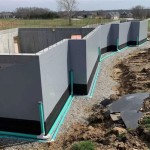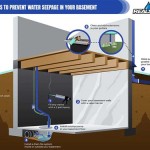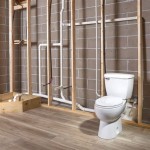What Is Sump Pump In Basement?
A sump pump is an essential component of any basement waterproofing system. It is a submersible pump that automatically removes water from a basement or other low-lying area. Sump pumps are typically installed in a sump basin, which is a hole or pit in the basement floor that collects water. When the water level in the sump basin rises, the sump pump turns on and pumps the water out of the basement. Sump pumps are an important part of protecting your home from water damage, especially in areas that are prone to flooding.
How Does Sump Pump In Basement Work?
Sump pumps work by using a float switch to detect the water level in the sump basin. When the water level rises, the float switch activates the pump, which turns on and begins pumping water out of the basin. The pump continues to run until the water level drops below the float switch, at which point the pump turns off. Sump pumps are typically powered by electricity, but there are also battery-powered sump pumps available for use in the event of a power outage.
Benefits Of Sump Pump In Basement
Sump pumps provide a number of benefits for homeowners, including:
- Prevents flooding: Sump pumps help to prevent flooding by automatically removing water from the basement. This can help to protect your home from water damage, which can be costly to repair.
- Protects your belongings: Sump pumps can help to protect your belongings from water damage. This includes furniture, appliances, and other valuable items that could be damaged by flooding.
- Reduces the risk of mold and mildew: Sump pumps can help to reduce the risk of mold and mildew growth in your basement. This can help to improve the air quality in your home and make it more comfortable to live in.
- Increases the value of your home: A sump pump can increase the value of your home by making it more desirable to potential buyers. Homes with sump pumps are less likely to flood, which can give buyers peace of mind.
Choosing A Sump Pump In Basement
When choosing a sump pump, there are a few factors to consider, including:
- The size of your basement: The size of your basement will determine the size of sump pump you need. A larger basement will require a larger pump to effectively remove water.
- The amount of water that enters your basement: The amount of water that enters your basement will also determine the size of sump pump you need. If your basement is prone to flooding, you will need a larger pump to handle the increased volume of water.
- The type of sump pump: There are two types of sump pumps: submersible and pedestal. Submersible pumps are installed in the sump basin and are completely submerged in water. Pedestal pumps are installed outside of the sump basin and are not submerged in water.
- The cost of the sump pump: Sump pumps can range in price from $100 to $500. The cost of the pump will depend on the size, type, and features of the pump.
Installing A Sump Pump In Basement
Installing a sump pump is a relatively simple process that can be completed in a few hours. However, it is important to follow the manufacturer's instructions carefully to ensure that the pump is installed correctly. Here are the general steps involved in installing a sump pump:
- Choose a location for the sump pump: The sump pump should be installed in the lowest point of the basement, where water is most likely to accumulate.
- Dig a sump basin: The sump basin should be large enough to hold the sump pump and allow for water to flow around the pump.
- Install the sump pump: Place the sump pump in the sump basin and connect the discharge pipe to the pump.
- Fill the sump basin with water: Fill the sump basin with water to test the pump. The pump should turn on and begin pumping water out of the basin.
Maintaining A Sump Pump In Basement
Sump pumps require regular maintenance to ensure that they are working properly. Here are some tips for maintaining your sump pump:
- Check the sump pump regularly: Check the sump pump monthly to make sure that it is working properly. Look for any signs of damage or corrosion.
- Clean the sump basin: Clean the sump basin every few months to remove any debris or sediment that could clog the pump.
- Test the sump pump: Test the sump pump annually by pouring water into the sump basin. The pump should turn on and begin pumping water out of the basin.

What Is A Sump Pump Peel Pumps Explain It Or Sell And Install Them

The Sump Pump Your Most Critical Basement Appliance

Basement Sump Pump Sedona Waterproofing Solutions

Diy Sump Pump Install Your Own Smd Fluid Controls

Basement Sump Pump Guides And Reviews

Best Sump Pumps For Your Basement Or Crawlspace The Home

Diy Sump Pump Install Your Own Smd Fluid Controls

Permanent Fixes For Damp Basements Diy

What To Do When Sump Pump Failure Leads Basement Flooding

Protect Your Property With A Basement Sump Pump








